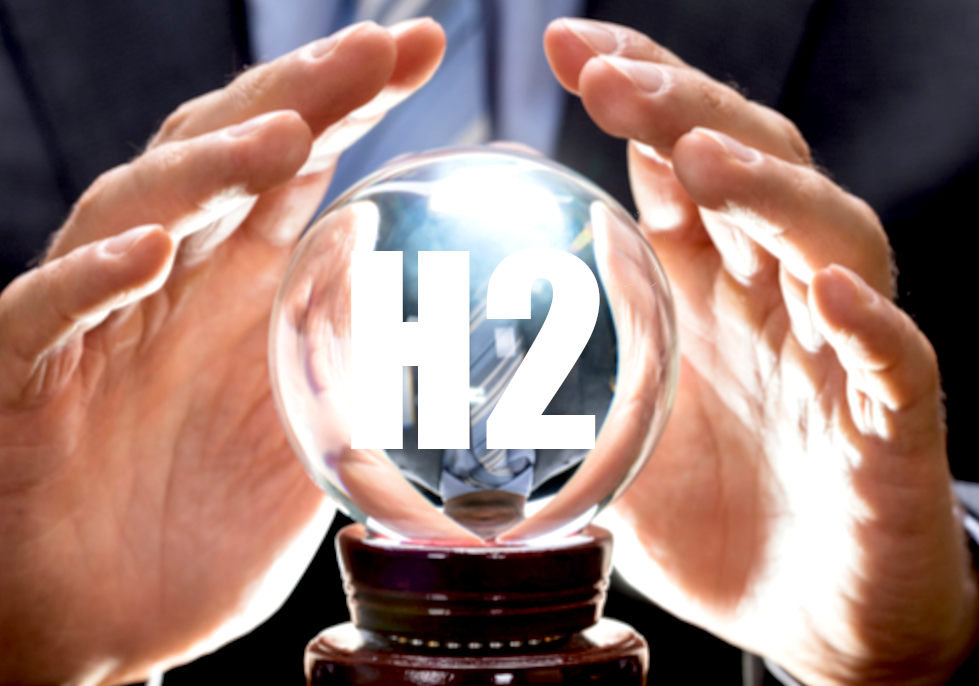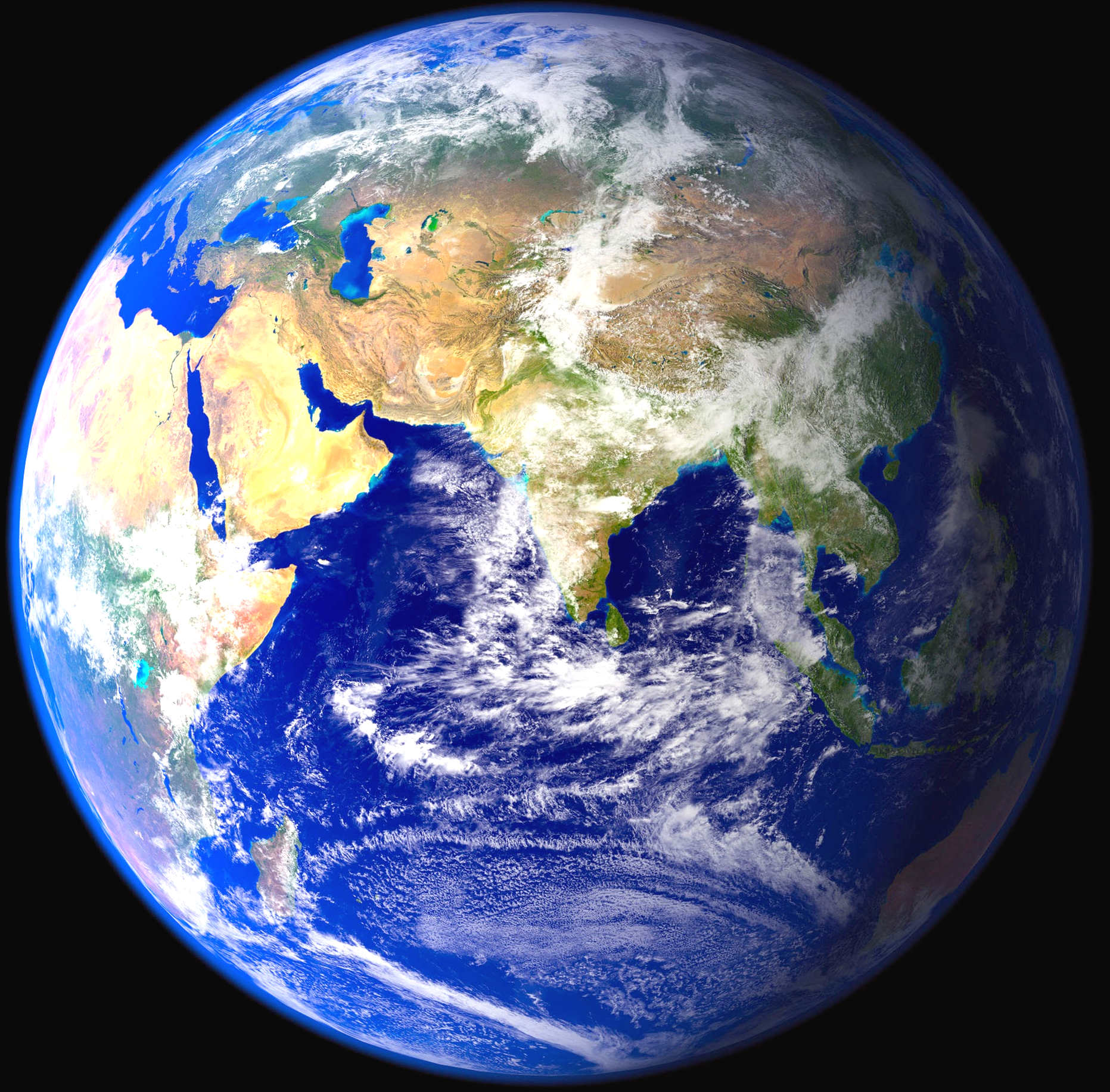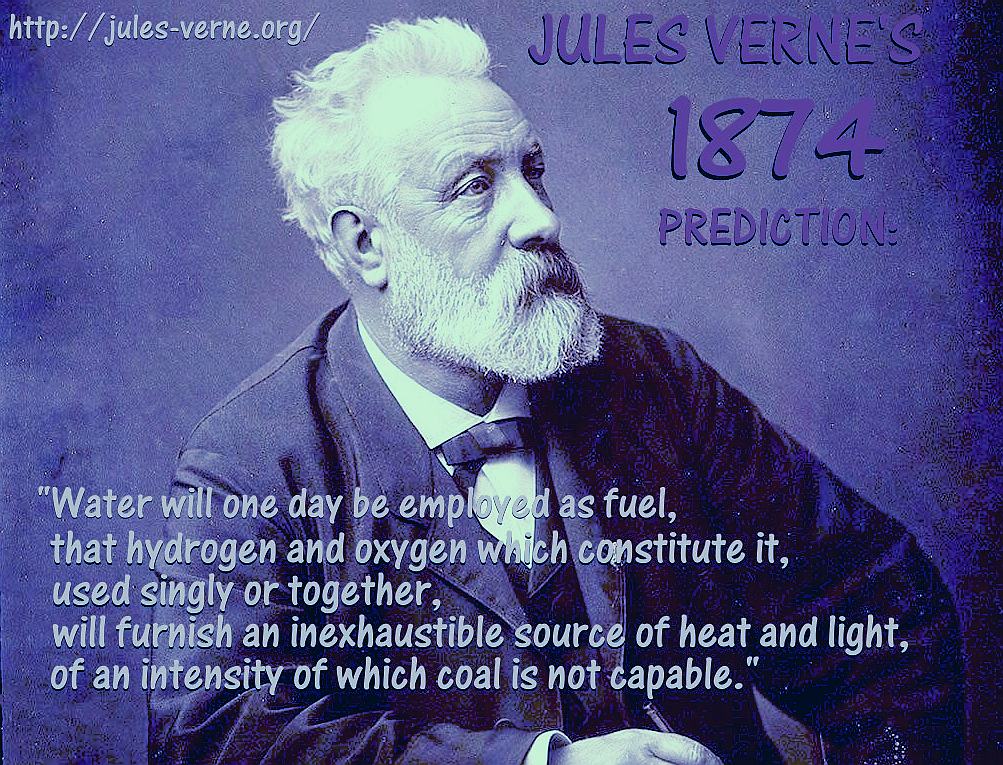|
Planet
Earth is the third rock from the Sun and the only astronomical object known to harbor
life. While large volumes of water can be found throughout the Solar System, only
Earth sustains liquid surface
water. About 71% of Earth's surface is made up of the
oceans, dwarfing Earth's polar ice, lakes, and
rivers.
Earth's average distance to the Sun is about 93 million miles (150 million kilometers)
held in place by orbit speed, and gradually slowing down. This distance
is our standard unit for measuring between space objects = 1AU. The
earth revolves about once every 24 hours, giving us a day. There are 365
days a year (except for leap year adjustments), the time it takes to
complete a circle around the sun.
Our human population has now exceeded 8 billion people, all needing to breathe air, eat
food and drink
water. And all needing a warm
(or cool) place to call home.

Humans have proven to be unreliable at predicting the future. If the past teaches us just one lesson, it is never to trust fortune tellers. Long range forecasts are overwhelmingly wrong. The few that endure, do so invariably through
betting on incremental advances of what has proven to be successful. But
we live in a world where technology advances exponentially. Or, as Arthur C Clarke put it: “The future is not what it used to be”.
Most
families need to travel to and from a place of work, or to buy
groceries, domestic appliances, etc. Those goods come to your country
from all over the world, mostly by sea. We need ships to be able to
shop. And trucks to distribute from ships to shops. Transportation is
essential to modern living. We've come a long way from tall ships and
horses and carts.
At
the moment we rely on fossil
fuels for shipping and trucking, but the planet
is getting hotter as a result of burning oil and gas. And don't
mention coal fired power stations, to warm our homes and factories.
These fuels are killing us and the planet.
WHERE
ARE WE IN THE SOLAR SYSTEM - FOOTBALL PITCH SCALE?
Our solar system doesn't fit
too well on paper — or a Web site for that matter.
So, scientists invented the Astronomical Unit (AU). One AU, about 93 million miles (150 million kilometers), represents the average distance from the Sun to the Earth. It would take an airliner more than 20 years to fly that distance — and that's just a one-way ticket. (That's traveling at about 400 mph or 644 kilometers per hour.)
To better understand these vast distances, we might shrink the solar system down to the size of a football field.
At this scale, the Sun (the largest thing in our solar system) is only a ball about two-thirds of an inch (17 millimeters) in diameter sitting on the goal line — that's about the width of a U.S. dime coin.
The inner planets — Mercury, Venus, Earth and Mars — are about the size of grains of sand on a football field scale. They would be dwarfed by a typical flea, which is about 3 millimeters long.
Closest to the goal line is Mercury, just under a yard from the end zone (.8 yards to be specific). In reality, the average distance from the Sun to Mercury is roughly 35 million miles (58 million kilometers) or 0.4 AU. At this scale, Mercury's diameter would be scarcely as large as the point of a needle.
Venus is next. It is 1.4 yards from the end zone. The true average distance from the Sun to Venus is about 67 million miles (108 million kilometers) or 0.7 AU. Its size on this scale is about 0.15 millimeters.
On to Earth, sitting pretty on the 2-yard line. It is slightly larger than Venus at about 0.16 millimeters.
Yes, we are that small. But huge in terms of intelligent life.
Earth reaps many benefits from our prime location in the solar system. We are at the perfect distance from the Sun for life to flourish. Venus is too hot. Mars is too cold. Scientists sometimes call our region of space the "Goldilocks Zone" because it appears to be just right for life.
Mars is on the three-yard line of our imaginary football field. The red planet is about 142 million miles (228 million kilometers) on average from the Sun. That's 1.5 AU. On this scale,
Mars is about 0.08 millimeters.
Asteroids roam far and wide in our solar system. But most are contained within the main asteroid belt between Jupiter and Mars. On our football field, you'd find them scattered like so many slow-moving linebackers between the four and eight yard lines. In real distances that's an average of roughly 186 million to 372 million miles (300 million to 600 million kilometers ) from the Sun, or 2 to 4 AU.
Jupiter remains pretty close to our end zone on the 10.5-yard line. Our solar system's largest planet is an average distance of 484 million miles (778 million kilometers) from the Sun. That's 5.2 AU. Jupiter is the largest of the planets, spanning nearly 1.75 millimeters in diameter on our football field scale. Jupiter's diameter is about equal to the thickness of a U.S quarter in our shrunken solar system.
Saturn is on the field at 19 yards from the goal line. The ringed world is about 887 million miles (1.4 billion kilometers) from the Sun, or 9.5 AU. Saturn's size on this scale: 1.47 millimeters.
Uranus is about the point where our cosmic coach would call in an interplanetary field goal kicker. The gas giant is about 38 yards from our end zone. In real distances, that's an average of 1.8 billion miles (2.9 billion kilometers) — 19 AU — from the Sun. That's quite a kick. It's little wonder only one spacecraft has visited Uranus. At 0.62 millimeters on this scale, Uranus is just a little smaller than the letter "R" in the word "TRUST" on a penny.
Neptune is where things start to get way out. It is 60 yards from our solar goal line on the imaginary football field. That's an average of 2.8 billion miles (4.5 billion kilometers) or 30 AU from the real Sun. Neptune, a little smaller than Uranus, is 0.6 millimeters on this scale.
Tiny Pluto is much closer to the opposing team's end zone. It's about 79 yards out from the Sun or 3.7 billion miles (5.9 billion kilometers) on average in real distances. That's 39.5 AU.
TIME
& TRAVEL
As
you can see from the above, a human lifetime is way too short for
serious space travel. Space walking and visiting the Moon, is like
dipping a toe in the water, rather than swimming the English
Channel, or rowing the Atlantic.
We
thus need very reliable robots to explore space. Or, a means of
regenerating, or extending the life of astronauts, should another planet
be found that can sustain human, or other intelligent lifeforms, for
colonization.
One
possible way of doing this is cloning,
or replication.
At the moment, science in its infancy - more fiction than fact. But a
distinct possibility, given our most recent technological advances with
computers and DNA decoding.
|



